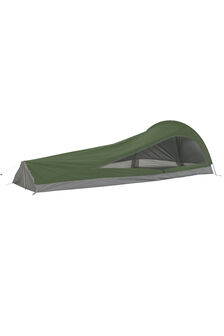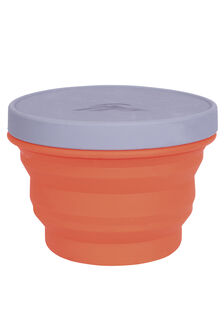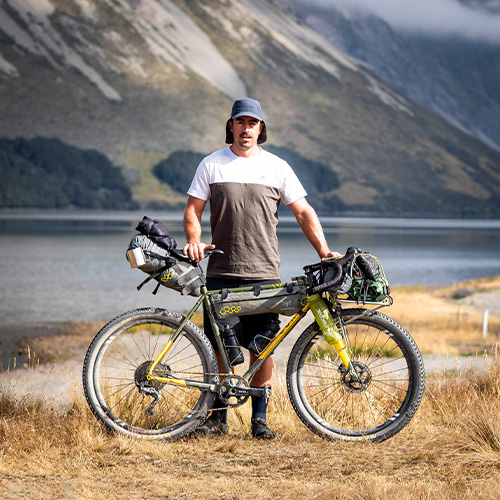
Let’s be honest, you’re probably getting into bikepacking to access remote areas and be self-sufficient. And to really unlock remote locations, camping is the way to go. The team from NZ Cycling Journal details their epic self-supported journey over four days in the upper South Island, including the Macpac kit they took for the ride (pun intended).
NZ Cycling Journal: We wanted to get further and deeper into the backcountry, so camping was the best option. The route took us through Rainbow Station, to St Arnaud then Hanmer Springs and finally onto the St James Cycle Trail. Here’s a brief breakdown of the camping kit we used.
Bikepacking Camp Equipment
Like any outdoor pursuit, there’s a direct link between the cost of gear and how much it weighs. Remember, with bikepacking, your legs will have to push the load you take, so a lightweight setup is optimal. Basically, the lighter the better and more enjoyable the ride. It also will assist with handling and any rough terrain you may encounter. You’ll want to ensure you’ve got a dialled pack list to ensure you’re not lugging the weight of a freight truck.
The deeper you head into the wilderness the less likely there’ll be accommodation. Well, accommodation of the bed/shower and continental breakfast type! With that said there’s nothing better than getting remote and away from it all. But you’ll want to ensure you’ve got some vital pieces of equipment before doing so.

The Macpac Bush Cocoon
The Tent
We recommend investing in a robust, lightweight, waterproof and modern tent. Ok, so you might have one stashed away from the ‘80’s but those ones are often bulky and heavy. The tent can be anything from a bivvy to a two-person tent with awning.
Bear in mind who’ll be sleeping in the tent and what gear you want stashed away in the tent during the evenings. The bivvy-style is great for just sleeping and not much else. Whereas a bigger tent provides a bit more space and place to put things, you have added weight. If you have two people on the bikepacking trip, a two-person tent can work well – one person takes the tent and the other can take the food.
The Mattress/Sleeping Bag
Ok, so we all know a bad night’s sleep sucks! What’s worse is a bad night’s sleep when you’re on a multi-day bikepacking trip. So, ensure you’ve got a good setup that’s comfortable. Firstly, a quality down sleeping bag will make a major difference to both the weight and packability of your setup. Then think about the climate and you can work out what weight you’ll need.
Secondly, choosing the right sleeping pad can make the difference between a getting a solid rest and or a night tossing and turning. So, there might be some hard people out there who don’t need one but for most a sleeping pad is a necessity on any bikepacking trip. And, with our climate it also keeps you from being damp as there’s a layer between you and the ground. Also, it’s not a bad idea to take a sturdy rubbish bag or similar to give the tent a membrane barrier between you and the ground. It will also help you feel a little warmer too.

The author in the Macpac Overland 400
Macpac Bush Cocoon Bivvy Bag
Our Price
NZ$384.99MEMBERS PRICE
30% OFFCLEARANCE
30% OFFSALE
30% OFFMacpac Standard Firefly 200 Down Sleeping Bag (3°C)
Our Price
NZ$349.99MEMBERS PRICE
30% OFFCLEARANCE
30% OFFSALE
30% OFFMacpac Standard Dragonfly 400 Down Sleeping Bag (-5°C)
Our Price
NZ$524.99MEMBERS PRICE
25% OFFCLEARANCE
25% OFFSALE
25% OFFMacpac Sleeping Mat — 3.8cm
Our Price
NZ$69.99MEMBERS PRICE
30% OFFCLEARANCE
30% OFFSALE
30% OFF
The Camp Kitchen
There’s a plethora of camp kitchen equipment out there. But, think about what you actually need to cook a decent meal. Keep it minimal but functional and don’t pack the kitchen sink – cause there’s not much space on your rig for large bulky pieces of equipment. There are various compact stoves on the market to suit all price points. You’ll also want a decent pan, stainless mug, a collapsible bowl, spork and any other essentials.
For our adventure, we liked having two mini stoves with two pots on the go – which meant you could cook a hearty meal in a short amount of time. That’s the key – to get the fuel straight in after the long day in the saddle.
This is the third instalment of our Bikepacking Gear Guides. Check out Part 1 (the bikes) and Part 2 (the apparel/kit) here. For more content about exploring life on two wheels, check out the NZ Cycling Journal website or follow them on Instagram.

Macpac Solo Pot Set
Our Price
NZ$31.96MEMBERS PRICE
20% OFFCLEARANCE
20% OFFSALE
20% OFFJetboil Jetpower Fuel — 230 g
Our Price
NZ$12.99MEMBERS PRICE
CLEARANCE
SALE
Macpac Silicone Container — 500ml
Our Price
NZ$10.39MEMBERS PRICE
20% OFFCLEARANCE
20% OFFSALE
20% OFF








